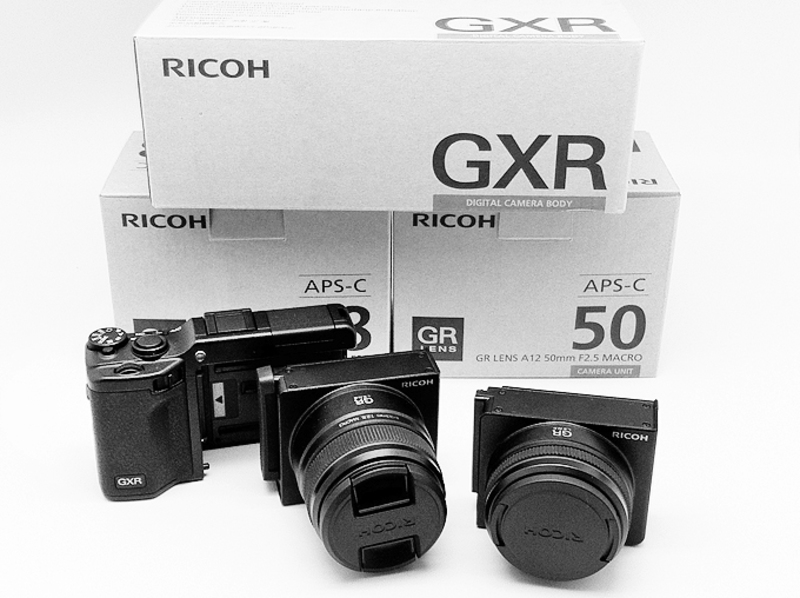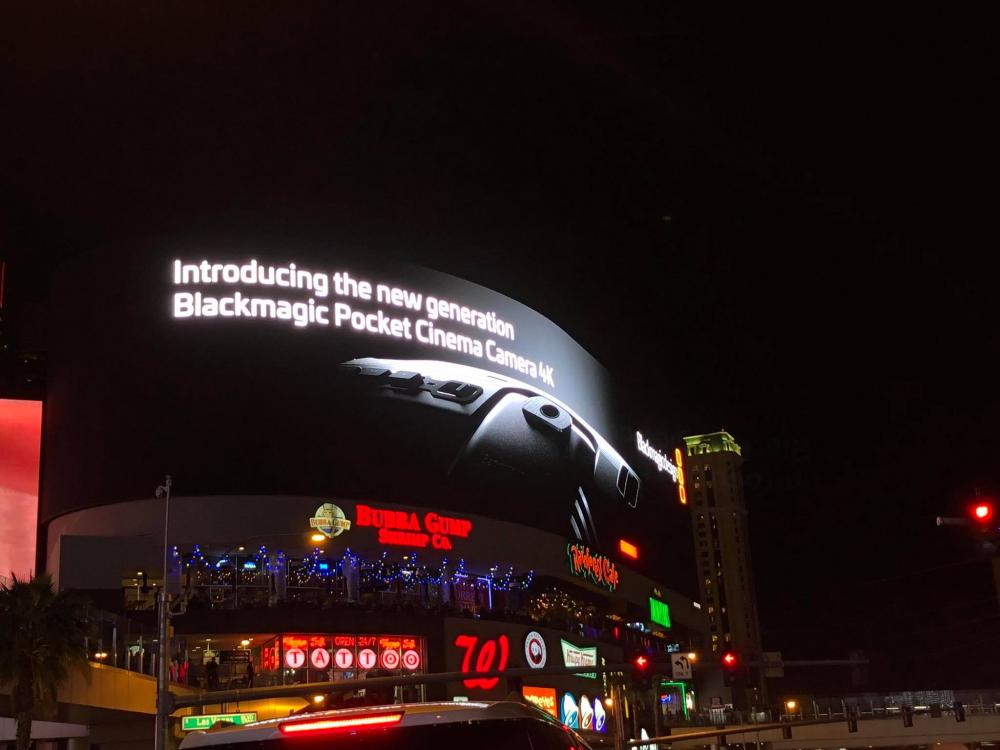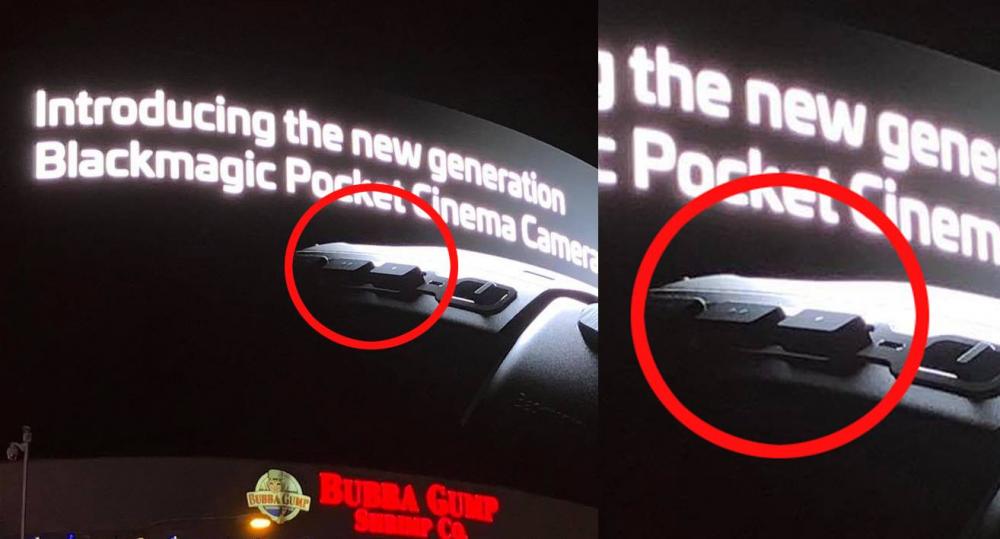
cantsin
Members-
Posts
948 -
Joined
-
Last visited
Content Type
Profiles
Forums
Articles
Everything posted by cantsin
-
You can see it even without Photoshop (on a calibrated monitor) - it says "Blackmagic Design", putting the manufacturer logo above the lens as with so many other cameras. No, because then all operation buttons would be on the wrong side, and you don't put an accessory screw mount on a lightweight, moveable part.
-
Yes, but based on the fact that the middle bulge is not a solid part of a one-piece camera housing, but looks like it sits in a bay. The two big switches right and left from it could be for locking and unlocking the sensor modules.
-
Look at the picture - the middle bulge is so far recessed into the camera housing that the sensor needs to sit inside there. There's simply no other space for it. The only speculative question is whether that middle bulge is a swappable unit or not. And, again, a swappable design like the Ricoh GXR (which is about as compact as the BM Pocket) makes sense if BM doesn't have a sensor yet that can deliver both 4K and high dynamic range. The swapping could only be about the sensor, not the mount - all those sensor modules may have MFT mounts.
-
If you look at the design of the housing, it's pretty clear that the bulge in the middle isn't just a mount, but contains the whole sensor. So my bet is still on Ricoh GXR-style swappable sensor+mount modules where the 4k option will be the 12 stops/400 ISO 1" sensor from the Micro Studio & URSA Broadcast, and the 14 stops option will be the 1080p sensor from the old pocket/Micro Cinema.
-
Given the massive heatsink and cooling block of the Ursa 4.6K, it's physically impossible to put its sensor into a small camera:
-
It's the Fairchild CIS1910F. Fairchild doesn't have a comparable 4K sensor, this is why speculations on the sensor in the new Pocket abound. (I'm remaining skeptical and assume, for the time being, that it will be the same sensor as in the Micro Studio.)
-
Burned-in Rec709 is purely a matter of the signal processing and firmware - you can pull a raw signal from any sensor including this one. Besides, the Studio Camera has been pushed to 12 stops dynamic range (from initial 11) and ISO 400 (from initial 200) through BM's recent firmware. BM could decide that 12 stops and 4K in RAW (=the same specs as the old 4K Blackmagic Cinema Camera and the old 4K URSA) are good enough, all the more when 1080p with 14 stops remains an available option. - This would also make a lot of sense from a marketing point of view, since BM can sell the Pocket as a 4K camera in times where 1080p cameras are difficult to sell any longer. Don't forget that BM doesn't have access to a broad range of sensors, but can only use third-party off-the-shelf sensors that are freely available on the market. At NAB 2017, a BM representative still said that no sensor was available that could deliver high dynamic range 4K in a small camera. As an avid BM Pocket user (since 2013 when the camera came out), I hope that my theory will be wrong, btw.
-
Actually, Cineform Raw is still not Open Source. Only the conventional flavors of the codec were publicly released.
-
I posted it elsewhere and will post it here again: I have a strong hunch that the new Pocket will use a design similar to the Ricoh GXR with swappable sensor/mount units (which would explain the bulge on the photograph) - and that two modules will be provided, one with the old 1080p sensor for people who favor dynamic range and low light over pixel resolution, and one with the 1" 4k sensor of the Micro Studio Camera with the tradeoff of 2 stops less dynamic range and half the native ISO (400 vs. 800). This would be an elegant way for BM to update the Pocket even if there are no suitable, freely available new sensors on the market (that would deliver both 4K and 14 stops dynamic range on an 1" sensor). - In any case, don't expect a GH5 replacement, because the classical tradeoffs (no in-body stabilization, sub-par internal sound recording, need of IR cut filters in front of the lens) will remain. Likely, the camera will also need expensive Sandisk UHS-II 300MB/s SD cards for 4K raw recording, and 4K will max out at 30p.
-
Did some historical digging into the web. The earliest occurence of the term "motion cadence" is from 2006, in this forum posting, where it refers to the look of After Effects' slow motion effect as opposed to that of Vegas: "From my own personal perspective, the slow-mo material I've encoded using Vegas looks no worse than the sort of slow-mo segments one sees in broadcasts. Other HDV camera users have found that After Effects has provided the sort of slow motion cadence that they required." The next mention is in a 2007 DVXuser review of the XH-A1 camcorder: " 24F is Canon’s simulated progressive scan system. 24P is Panasonic’s true progressive scan system. 24F results in a resolution drop of something like 15% on the Canon; 24P delivers the full resolution of the Panasonic chipset. But in practical terms, when you get right down to it – it doesn’t make much difference. Both deliver film-style motion with proper 24fps motion cadence." So here, "motion cadence" is simply a synonym of frame rate (in a time when 24p video recording was a luxurious rarity). The next mentions are in a 2009 forum posting on video projectors: "When characters in a movie become actors on a set, frame interpolation has gone too far. I used to play with frame interpolation (Trimension) on my pc outputting to a 106" projected image, it certainly was a neat effect, but the artifacts, motion cadence inconsistencies and soap opera effect were ultimately deal killers for me". Again, "motion cadence" just refers to frame rate. In the same year, the term turns up on DVXuser again in the context of frame rate conversions: "A more advanced way of converting 60 frames to 24 is using an "intelligent" processes that will use the actual 60p frames information to guess how each frame would have been if the footage was actually shot in 24p, this might be called frame interpolation or frame resample. Any of this methods result in a better motion cadence, due to the regular time separation between the resulting frames." In 2010, the term resurfaces on REDuser , in the same context of frame rate resampling. I'd argue that any argumentation of the quality of motion rendering (to put it into less esoteric terms) really is about shutter speeds relative to frame rates and rolling shutter effects. Every other discussion of "motion cadence" probably has to do more with the fact that most people on this and other fora shoot 24p but do not have native 24p displays (and native 24p graphics card output) so that motion will always look quirky and be influenced by one or more motion interpolations in the playback chain.
-
The term "motion cadence" does not exist in any scientific or engineering literature, not even any published work on cinematography or videography, but only as an urban myth on camera forums.
-
The Vlogger wants to use VLog primarily for 8bit footage. That's a bad idea. The profile should only be used for 10bit video.
-
We've only covered the differences in the camera hardware here, but important differences also lie in the software. Blackmagic cameras give you an unprocessed image that is meant to be color-corrected, denoised and possibly sharpened in post. Cameras like the GH5 never give you an unprocessed image, not even in 10bit Log, but one with baked-in noise reduction, sharpening and geometry and vignetting correction of system lenses (just like most video camcorders do). What is better, completely depends on your needs and shooting scenarios. If you producing documentary, news, web video/vlogging and information programs with fast turnaround times, the GH5 is superior in every respect, because it saves you a lot of time. If you shoot movies, music videos, advertising or any other film where image quality and malleability trumps everything else, and you have the time for post production, you're better off with a Blackmagic than battling the (codec/signal processing) limitations of the GH5. It's just like in photography where a medium format camera isn't by definition "better" than a 35mm SLR or rangefinder. Studio photographers worked with medium format, photo journalists with 35mm cameras. You could have taken a Hasselblad for a journalistic photo shoot (like a sports game or press conference), but the disadvantages in handling would have outweighed the advantages in image resolution. (Especially, when hardly anyone will see the difference in a newsprinted photograph. Similarly, hardly anyone will see the difference between a YouTube Vlog shot on a GH5 and a Vlog shots on a BMPC.) (Correspondingly, the GH5 has about the size and weight of a 35mm SLR and the BMPC the size and weight of a medium format studio photography camera.)
-
Film stocks in the 1970s-1980s only had about 8 stops dynamic range. @jonpais, your question is - with due respect - a bit misguided. It doesn't matter how much dynamic range the film stock or camera has, but whether the dynamic range of the scene you're shooting fits within the dynamic range of the camera (or film stock). With a camera that only has 8 stops dynamic range, you light your scene in such a way that its contrast ratio stays within a ratio of 1:256. If necessary, you block or filter highlights that would blow out, and brighten up shadows that would be cut off. (This is exactly what the GH2 team did during the infamous 2012 Zacuto shootout - light the studio scene in such a way that it fit the camera's limited dynamic range and thus made its footage competitive with the material shot on Alexa and RED.) Tightly controlled light was the working formula for the Hollywood studio system from the 1930s to the 1960s, too. That only changed in the 1970s when New Hollywood directors like Scorsese adopted methods of documentary filmmaking and the French Nouvelle Vague and shot under available light in the streets. If you can't control the light of your scene, you have to find a location whose light fits the camera's dynamic range. In that sense, a camera with better dynamic range will always give you more possibilities in shooting situations where you have limited or no control over the light.
-
These numerical measures are not a good comparison because the BMPC is one solid, square block whereas the cubic measurement of the GH5 contains a lot of air.
-
No, definitely not, this is too weak for the camera. (I own both the BMCC, which has the same housing as the BMPC, and this chestpod, so I know what I am writing about.) And the BMPC only has a non-exchangeable internal battery (which doesn't last long and will last even less when you buy the camera second-hand) and needs beefy external batteries like V-Mounts or at least Sony F970s to run for a reasonable amount of time. I strongly suggest you rent the BMPC to find out that it's not a drop-in replacement for a GH5, just like a truck is not a drop-in replacement for a compact car.
-
If you rig up the GH5 with external recorders and monitors, yes. But you can never get the BMPC as small as the GH5, and need a whole different class of tripods and stabilizers for them. (Even a rigged-up GH5 can still be unrigged and put on a small gimbal or monopod. Not the BMPC.) On top of that, the BMPC cannot use MFT lenses and Speed Boosters and has a low native ISO of 400.
-
The two cameras exist in completely different segments. The GH5 is above all a highly portable run-and-gun camera, with compact size, in-body-stabilization and long battery life that can be used in scenarios where you'd used a C300 or Sony FS in the past. It tries to do everything - photography, high quality video - but compromises in signal processing and codec. The Blackmagic Cinema Camera is comparatively big, heavy, needs external power for longer use, needs external audio and/or preamps, needs IR filters and handles like a digital cinema camera. You get beautiful images in Raw or ProRes, no rolling shutter, but need a more complex rig. (The camera is too big and heavy for DSLR class tripods and stabilizers and is not meant for handheld shooting.) Which camera is better for you, completely depends on what and how you are shooting.
-
Your post is likely to result in endless pro-and-con discussions and religious wars on this forum. But suffice to say that basically all current mirrorless cameras with decent video fit your bill: Panasonics GH5/5s (for Micro Four Thirds), Sony's A6300/6500 (for APS-C) and A7s/sII/RII/RIII/III (for full frame) and Fuji's XT2/XH1. Add the Blackmagic Pocket and Micro if you're open to a FullHD video-only camera with operations and workflow more similar to digital cinema cameras (which can be an advantage or disadvantage, depending on your needs and expectations). I would strongly suggest that you go and rent/test and compare these cameras yourself, in real life, to make your decision.
-
More tests: When I convert the 16bit TIFF to 9bit, 819,542 unique colors remain. When I convert the 16bit TIFF to 10bit, then it's back to 1,024,646 unique colors. That means that the camera's external video signal is true 10bit indeed.
-
Yep, that's true 10bit footage. Extracted one frame as a 16bit TIFF and counted unique colors (with Imagemagick's "identify -format %k " command) and got 1,024,646 unique colors. After changing the color depth of the TIFF to 8bit, the result was 191,761 unique colors. If the recorder had just recorded an 8bit signal into a 10bit codec, the number of unique colors would have remained the same after the color depth change of the framegrab. - This means that Sony's consumer camera chips are now 10bit capable and that we should expect external 10bit on the next A7s.
-
Edit and master in the highest quality possible. In the best case, work with an editing program that can natively use the CinemaDNGs (at least as the basis for the rendered video, even if you use proxies for better performance during the edit). Render to a high quality codec such as ProRes, DNxHR or Cineform, and master your BluRay with a high-quality h264 encoder from that file.
-
Sony TRV95 DV 3-chip camcorder - picked up on a flea market for $20 and shot a video with it just for the fun and challenge: The camcorder turned out to have some issues with deadjusted tape heads, resulting in drop-outs (that you can hear) and glitches. Nevertheless, the built-in stabilizer of the camera worked amazingly well (everything was shot handheld with a small chestpod!), and the autofocus is well-designed for video (with slow focus transitions). And the compact all-in-one handling, fast-aperture parfocal zoom and good grip makes you realize that we didn't just gain better technology since the DSLR revolution, but also lost a few good features in its course. Work process: Grabbed the footage on an old PC with Firewire, edited it and color-graded it in Resolve using deinterlacing, Neat Video, 1080p upscaling + FilmConvert grain to mask the upscaling and denoising.
-
Go through the kid's posting history, and you see that he's an 18-years-old high schooler who claims to shoot both horse racing and high-end real estate. Yet he never links to any video he shot. He gives his opinions on a lot of cameras that he cannot possibly have owned, only based on their specs. This smells too much like a new Ebrahim. I guess that this time, his big mouth got the better of him and make him bite off more than he could chew.
-
With Raw, you can set white balance in post (in the CinemaDNG settings); no need to do this via color correction.



